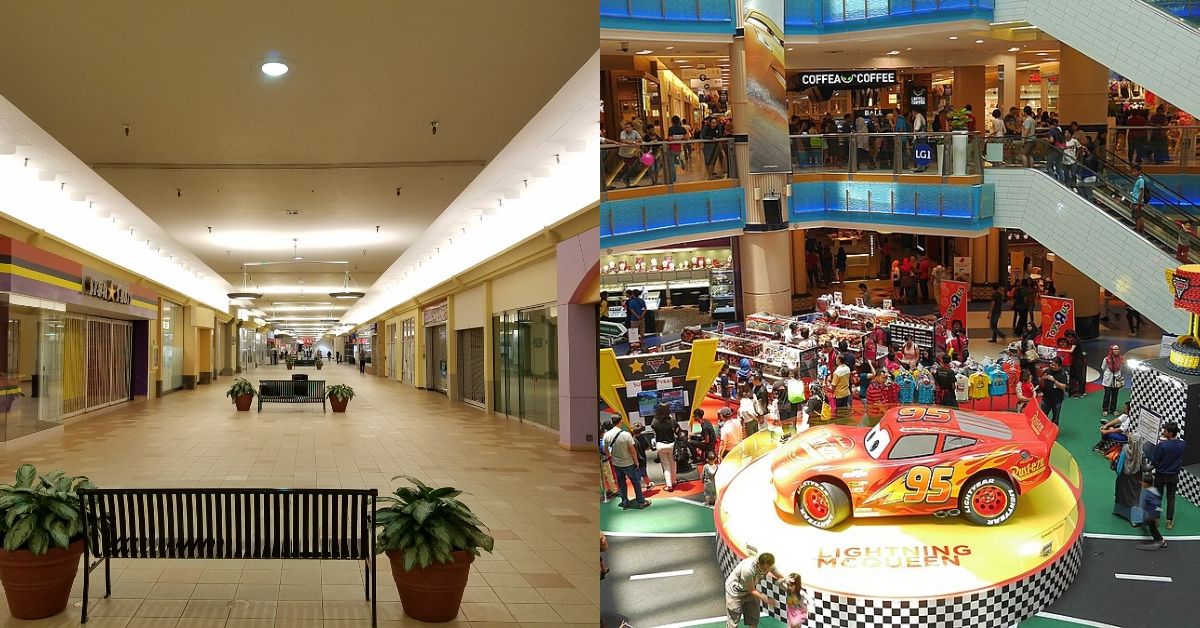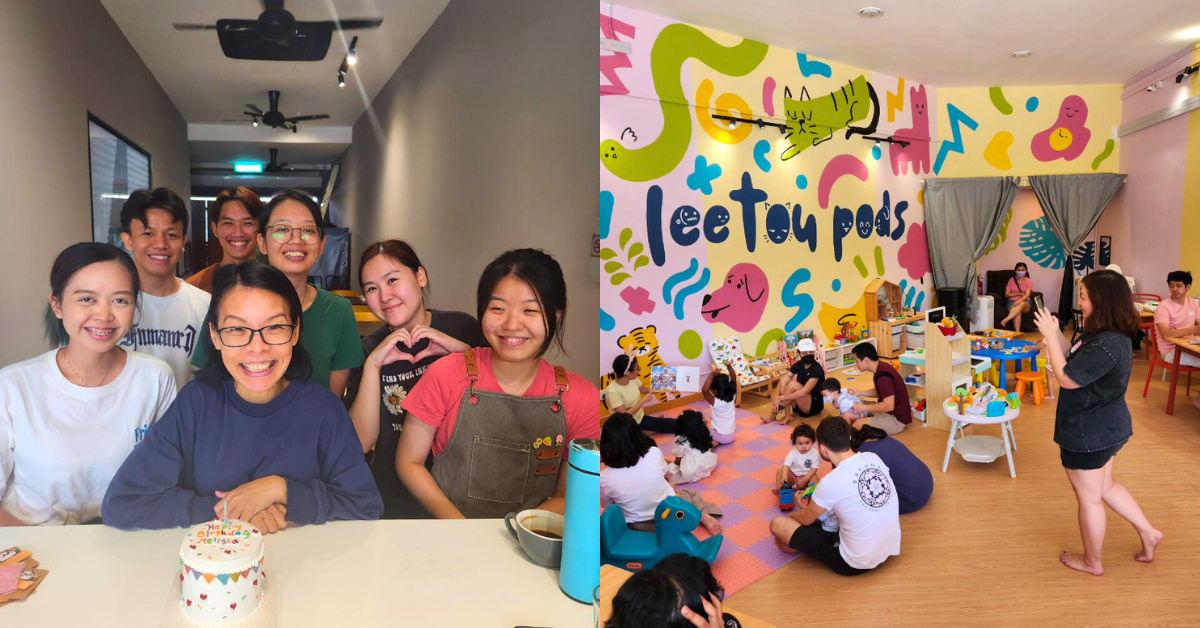In 2017, Malaysia already had over 120 malls just in greater Kuala Lumpur alone. A year ago, it was predicted that we would soon have about 700 malls in total across the country.
With so many already existing and more that are cropping up year by year, it’s expected that some would ‘fail’ while a specific few enjoy massive footfall.
You’ve probably been to a mall that appeared pretty empty even on a weekend, when it’s supposed to be uncomfortably packed with tourists, locals, and screaming kids. But why?
If you don’t feel like reading to find out, here’s a quick and easy video to watch:
1. Too Many Malls In One Location
Newer, smaller malls that crop up in an area that already has one or more popular malls tend to struggle with attracting customers.
According to JLL property management, high density refers to multiple malls that are within a 10-kilometre radius of each other.
For example, Atria Mall, 1 Utama, Starling Mall, and 3 Damansara are all within the Petaling Jaya neighbourhood.

With those first few bigger players cited, it’s no wonder that local online forums have pointed out how 3 Damansara is falling behind.
There is also an oversupply of malls that are targeting the same pool of customers, and the only way for a mall (even an older one) to survive against this struggle is to find a way to stand out.
Major malls may end up attempting to outdo each other to win the hearts of customers, and while this could end badly for them, it means more choices and better value for us, the consumers.
2. The Wrong Tenants & Rental Rates
We’ve all been to several malls where not a single shop we saw managed to draw us in to take a closer look. We simply survey the area quickly, move on to find food, and never return to that mall again.
Britannica states that every mall needs an anchor tenant like a gym or grocery store, and should have daily convenience shops like money changers or hair salons.

Having these kinds of tenants will give people a reason to come, as they can offer convenience to more than 2,000 people within a 6-minute drive.
On the other hand, the mall needs to give tenants a reason to join or stay too. Struggling malls will usually discount their rental prices to encourage tenant occupancy (since having vacant shops doesn’t look inviting).
3. Poor Facilities & Amenities
Malls are no longer just a place for retail shopping, but for experience, leisure, and convenience, according to the BDC Network.
For example, Paradigm Mall’s free shuttle services between the LRT Station and the mall has increased the number of visitors by 50%. After Jaya One refurbished in 2018, it became the first pet-friendly mall and opened its doors to an extended portion of the usual demographic.

Even the smaller things matter. Just having parking availability sensors makes finding a spot so much easier, and innovative technology like the ParkEasy app in Putrajaya’s IOI City Mall that allows people to reserve spots and find their cars easily can make the experience better.
Not too long ago, 1 Utama launched its own e-wallet and e-commerce platform to make shopping easier for consumers.
While all this might seem unnecessary to some of us, others might actually find that these additional things improve their overall shopping experience.
4. A Lack Of Attractions
Nowadays, shops aren’t enough to bring in the customers. Shopping malls need to come up with new ways to incorporate value-added elements that make consumers excited to visit.
Some local malls with high traffic usually have tenants who offer experiential based activities like escape rooms, VR theme parks, and rock climbing.

In keeping up with the times, Fahrenheit 88 in Bukit Bintang opened a ‘Selfie Museum’, while Paradigm Mall plans to open an indoor theme park by the end of 2019.
Having attractions will definitely attract customers, but in order to keep them coming back, these attractions will have to be maintained or else they’ll become a liability and make a mall look run-down.
5. Overlooking The Power Of Events
Malls that host events like bazaars and seminars not only attract more visitors, but they can also make spaces appear less empty.

In 2018, when Sunway Pyramid brought in the first-ever Artbox Malaysia, it saw a 30% increase in foot traffic. The mall also reported a 20% sales growth in return.
These sorts of events and partnerships may be short-term solutions to keeping a mall alive or active, but they are still ultimately designed to gain more interest from tenants and consumers.
-//-
It’s true that consumer mindsets and demands change often, and fast. Malls will have to keep up, do their research, and innovate if they want to maintain or increase their number of consumers.
Personally, I don’t ask much from a mall. I’m mostly a window shopper, and if I do spend, it’s usually on food.
However, one thing that definitely makes or breaks a mall for me is the parking availability lights. Those tiny things have changed my life for the better (since I now drive), and they’ve become such a must to me that I don’t ever visit a mall that doesn’t have them.
Featured Image Credit: Wikimedia Commons / Wikimedia Commons









